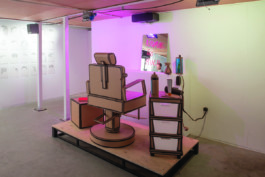
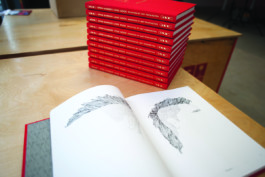
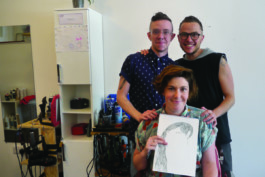
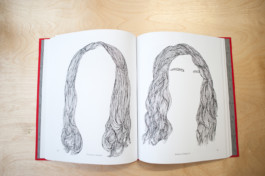
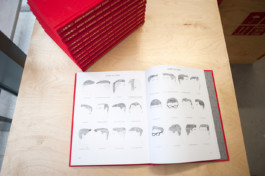
The result of a 5 month residency at the Trans led Queer friendly hairdressers Open Barbers in Hoxton, London. During this time Ames drew over 200 portraits of clients getting their haircut, organised open workshops with Rudy Lowe, Scottee, Linda Stupart, Greygory Vass and Gendered Intelligence. The residency culminated in the exhibition ‘Assuming Too Much’ and the launch of the published and editioned Lookbook. The Lookbook allows clients to browse cuts and styles that don’t assume their gender, and is still used by Open Barbers hairdressers today. Funded by the Arts Council England, 2016.
At 15, Ames Pennington got a Saturday job at their local hair- dressers. “The day was typically spent nursing a teenage hang- over, washing hair, folding towels, sweeping, and leaving with £12 in my pocket,’ she says. “Rinse, wash and repeat for two years.”
17 years later, they returned to a salon. But this time it was a quite different story.
Firstly, Open Barbers is not just any kind of salon. Based in Hackney in east London, it is a social enterprise which offers a personalised haircutting experience with a queer and trans friendly attitude. Open Barbers is led by Greygory Vass and Felix Lane, and aims to celebrate people’s appearance the way they want to be seen. The salon offers a sliding scale of payment, inviting clients to pay what they can afford. The venue includes a welcoming hang out area, with a range of teas, fanzines and biscuits to make clients feel at home.
Secondly, instead of washing hair, Ames was drawing it. No longer a Saturday 'girl' but an artist, Ames spent four-months in residence at Open Barbers (May to September 2016), where they drew hair portraits of the salon’s clients. These delicate and beautiful pictures trace their sitters’ hair only: no face shape, no identifying features. A selection of them are compiled, here, into a Look Book for the salon, to help clients choose their next style.
Ames and Open Barbers started working together in 2015, when they spent three weeks trialing the idea of an artist’s residency in the salon. It was here that Ames, Greygory and Felixi came up with the idea of a Look Book of hair portraits. “Having documentation of our haircuts is really useful and important to us,” Greygory and Felix say. But a traditional Look Book is filled with models conforming to narrow stereotypes of gender and beauty. This one celebrates the hair itself, with none of these limiting associations.
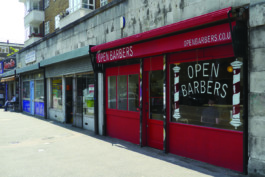
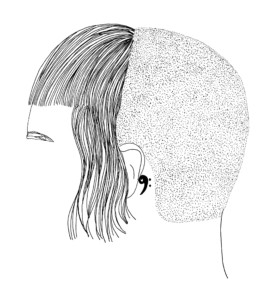
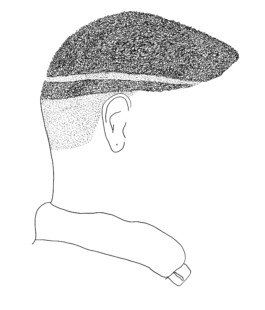
During the longer residency in 2016, Amy added two new elements to the process of compiling drawings. They invited the people they drew to give each work a title, based on what they had been talking or thinking about whilst being the subject of Amy’s artistic gaze. These titles include:
Assuming too much // Nerdpunk // What’s the goss? // Daydreaming // Drawing & caring //Broadcity and Lesbian nuns //French exam // Tell me the truth always ... // Children ask me if I’m a girl in the front of a boy in the back // My inner twink // ACAB – all councillors (+ coppers) are bastards // Dachshund enthusiasts // Queer magical realism // Xmas protest // Sly pony // Fruitful dishonesty // Lint roller // Masc4Mascara
The titles are a testament to the relationship between Amy and their sitters, and draw attention to the interplay of relation- ships at work all around us, as we construct – or perform – our identities day to day. And, before they left, Amy gave the sitters a carbon copy of the work they had done. These tracings are partial memories of the process of the image and every- thing it entails. They don’t record every line that Amy drew, but they do include smudges and echoes of the movements of their hand. They are also, then, smudges and echoes of the time that Amy and the sitter spent together, and of the context of Open Barbers where their meeting took place.
Amy has always been fascinated by the social life of the salon. “An appointment at the hairdressers’ has the potential to transform us, upset us and make us question our identity as we stare back at the mirror,” says Amy. “Hairdressers witness their clients’ lives from the sidelines. At every haircut, something more is shared.” Open Barbers’ approach to hair- dressing cares about the personal experience at the heart of the commercial transaction. Likewise, Amy’s portraits are not just about a visible, end result, but also how the process that leads there makes us feel about ourselves, and our place in a community.
This interest in people is at the heart of Amy’s practice as an artist. A former care-worker educated at the radical, free art-academy of Islington Mill, Amy often works in social settings – such as care homes, parks and working men’s clubs. Amy creates close relationships with the people they work with, who are simultaneously co-collaborators, participants and audiences for their work. At the same time, their work is infused with a belief in the transformational nature of art. In a film made during a residency for the Lancashire-based arts organisation In-Situ, for example, Amy projected archive footage onto the pages of an empty book in 81-year old Margaret’s hands, then recorded Margaret recalling the memories the films provoked. Here, as in the hair portraits, the art object creates both a trace of a personal encounter, and a transcendent experience that suggests new ways of seeing the world.
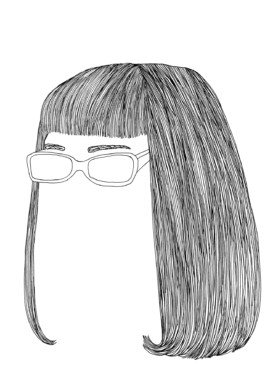
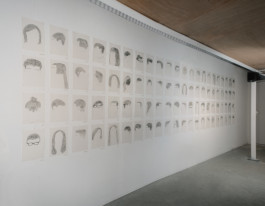
In other words, the Open Barbers residency was at least as much about people as it was about pictures. The process of drawing was a catalyst for personal relationships to grow. “It’s really wonderful to see how excited the clients got when they were asked if they wanted to be drawn,” say Greygory and Felix, “to have that affirmation that we want them to be seen, and that how they look is valid and worth celebrating. We’ve seen Amy chatting away to clients who can usually be quite reserved, and having the drawing done seems to really bring people out of themselves.” This careful, caring and mutual responsiveness is what links Amy’s artistic practice with Open Barbers’ work as a social enterprise. “We feel it’s important that clients feel in charge of their own image,” say Greygory and Felix, “and the way Amy approached the drawing process is another way of taking back the means of representation, out of the hands of society that tries to erase so many gender identities and presentations.”
Despite her experience as a Saturday 'girl', working at Open Barbers has also given Amy a new perspective on what hairdressers do. “To me,” they says, in a recent interview for Tractions, “both [drawing and haircutting] are very sculptural. You often follow shapes and create lines. I wonder if Greygory or Felix (or Richard, who works at the salon part-time) ever get the same feeling as I do...about half way through a drawing, a wave of excitement strikes as I know it’s going to be a good drawing – something has just worked and has been captured right. I wonder if they ever feel the same way in the middle of a haircut?”1
This Look Book is a lasting memory of Amy’s residency at Open Barbers: a glimpse into the lives and conversations they were part of, as well as a tool to help the salon and its clients as they continue to grow. “It is a record of the community of Open Barbers,” she says, “and I hope its legacy will be to help the community to thrive and to be represented in a new kind of way.”
Note